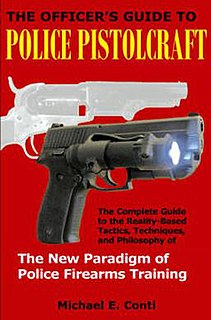 W
WGun safety rules and practice recommendations are intended to avoid accidental discharge or negligent discharge, or the consequences of firearm malfunctions. Their purpose is to eliminate or minimize the risks of unintentional death, injury or property damage caused by improper possession, storage or handling of firearms. There were 47,000 unintentional firearm deaths worldwide in 2013.
 W
WThe Commission internationale permanente pour l'épreuve des armes à feu portatives is an international organisation which sets standards for safety testing of firearms. As of 2015, its members are the national governments of 14 countries, of which 11 are European Union member states. The C.I.P. safeguards that all firearms and ammunition sold to civilian purchasers in member states are safe for the users.
 W
WThe Eddie Eagle GunSafe program and its namesake character were developed by the National Rifle Association for children who are generally considered too young to be allowed to handle firearms. While maturity levels vary, the Eddie Eagle program is intended for children of any age from pre-school through third grade.
 W
WA gun safe is a safe for one or more firearms and/or ammunition for those guns. Gun safes are primarily used to prevent access to unauthorized or unqualified persons, for burglary protection, and, in more capable safes, to protect the contents from damage during a flood, fire, or natural disaster. Access prevention is required by law in many places, necessitating a gun lock, metal gun cabinet, or gun safe. Gun safes have largely replaced the gun cabinets made of fine stained wood with etched glass fronts used for display that were commonly used decades ago, although some gun safes are made to resemble such gun cabinets.
 W
WNATO EPVAT testing is one of the three recognized classes of procedures used in the world to control the safety and quality of firearms ammunition.
 W
WThe Officer's Guide to Police Pistolcraft is a 2009 non-fiction book by Michael E. Conti which covers combat-related situations arising in the course of standard law enforcement. Together with Police Pistolcraft, it forms the basis for the current pistol training program of the Massachusetts State Police and has been adopted by a range of other law enforcement jurisdictions.
 W
WIn firearms, a safety or safety catch is a mechanism used to help prevent the accidental discharge of a firearm, helping to ensure safer handling.
 W
WSeason cracking is a form of stress-corrosion cracking of brass cartridge cases originally reported from British forces in India. During the monsoon season, military activity was temporarily reduced, and ammunition was stored in stables until the dry weather returned. Many brass cartridges were subsequently found to be cracked, especially where the case was crimped to the bullet. It was not until 1921 that the phenomenon was explained by Moor, Beckinsale and Mallinson: ammonia from horse urine, combined with the residual stress in the cold-drawn metal of the cartridges, was responsible for the cracking.
 W
WA trigger guard is a loop surrounding the trigger of a firearm and protecting it from accidental discharge.